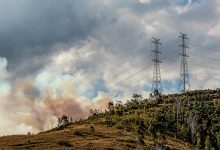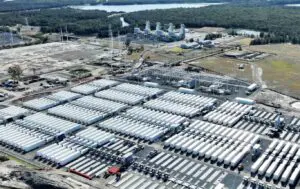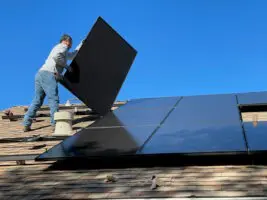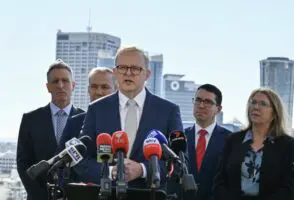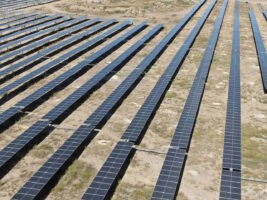Electricity network planners and operators should come together in a national summit to incorporate modern technologies and energy management tools in the rebuild of bushfire damaged infrastructure, a leading environmental organisation has said.
The Total Environment Centre has issued the call to use the post-bushfire re-construction efforts as an opportunity to respond strategically when replacing electricity network infrastructure.
After a summer that continues to impact communities across large portions of Australia’s south-eastern States, a significant amount of electricity network infrastructure needs to be repaired and rebuild after being destroyed by fires.
“We are risking spending tens of millions of dollars on rebuilding the wrong infrastructure after the bushfire crisis,” the Total Environment Centre’s energy market advocate Mark Byrne said.
The Total Environment Centre has previously advocated for the increased adoption of distributed energy resources, locating electricity supplies closure to population centres where demand is located, potentially reducing costs, increasing reliability and avoiding the inadvertent cause of future bushfires by long-distance network infrastructure that has fallen.
“Should we continue to supply thousands of properties and small towns via long skinny power lines running through dense bushland? For individual properties the alternatives include stand-alone power systems based on based on solar energy and batteries. For small communities it could mean microgrids that are either standalone, or that can be kept running when the main grid goes down.”
“These alternatives could end up saving everyone money, but at the moment networks have their hands tied by outdated regulations that stop them from going down this route,” Byrne added.
The Total Environment Centre said that it was crucial that national coordination now occurs as decisions are being made on investments in replacement network infrastructure.
“We need a national summit to address this issue before networks are forced to spend money on assets that might take consumers 30 or 50 years to pay off, but which might burn down again in the next bushfire.”
“At the forefront of the conversation should be the needs and desires of the local communities affected. They need to be consulted and involved at every step.”
Many communities were left without power for extended periods, including communities that were facing imminent threats of bushfire, after supplies were cut. This subsequently left several townships without access to communications services, after systems exhausted limited backup supplies of power.
According to Energy Networks Australia, the industry body that represents distribution and transmission network companies, more than 5,000 electricity poles had been destroyed across New South Wales and Victoria and that “entire sections of electricity networks are being rebuilt from the ground up.”
“Bushfires can have a direct and indirect impact on electricity networks. Fire can damage power poles and other equipment and heat and smoke from fires can cause overheating at substations,” Energy Networks Australia CEO Andrew Dillon, said.
“Networks are continually working on fire prevention measures including installing new technologies, removing or pruning high-risk trees and inspecting equipment.”
Energy Networks Australia confirmed that electricity supplies in some remote communities were currently being supplied by generators, effectively operating as standalone power systems.
The Total Environment Centre has called on governments and energy system planners to take the opportunity to review the energy system design and ensure regional communities impacted by bushfires are equipped with resilient electricity supplies into the future.
Energy technologies have evolved considerably since electricity networks were first rolled out into the regional areas, and the use of distributed energy resources, in including solar and energy storage, has emerged as a viable alternative to traditional, centralised, electricity systems.
“Right now, networks are under immense pressure to rebuild like-for-like, which makes no more sense than rebuilding an individual house to the same specifications after it has been destroyed by a bushfire. We need to adapt to a new world of increased climate risk. Part of this involves allowing networks to be more creative in their grid rebuilding efforts.”
Last week, the NSW Government announced that it would commission an independent expert inquiry into causes, preparation and response to the 2019/20 bushfire season, with a view to using the findings to prepare the state for future bushfire seasons.

